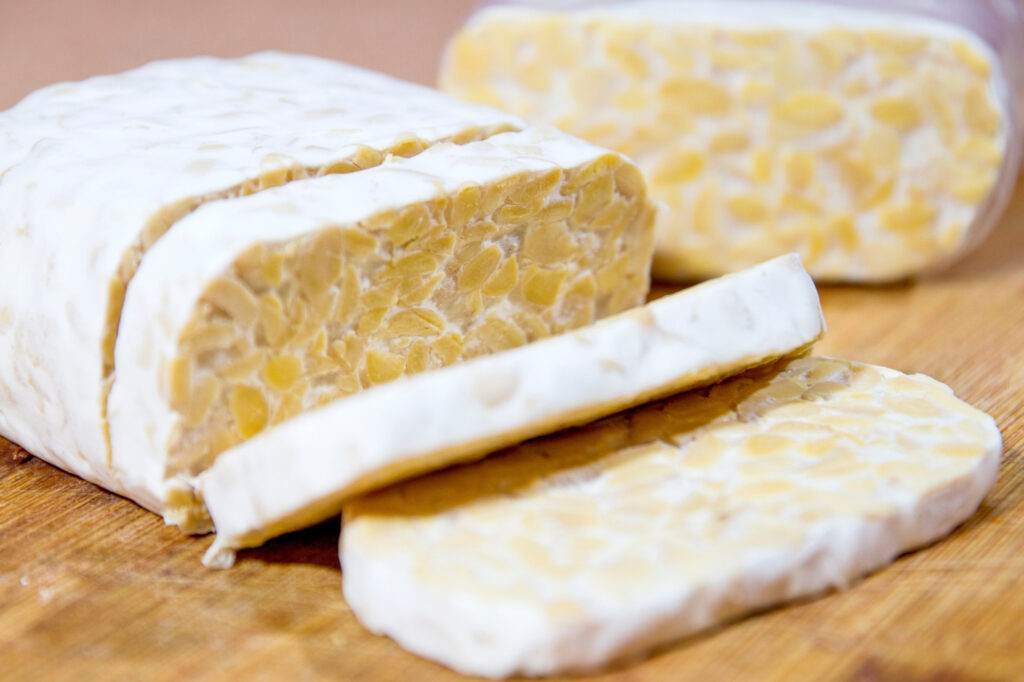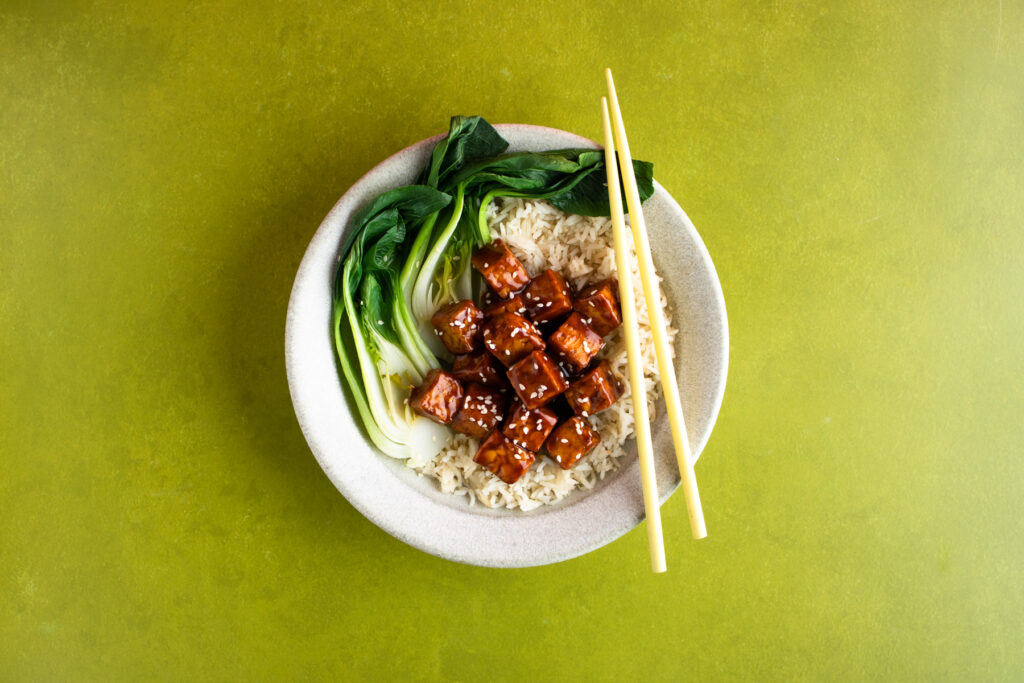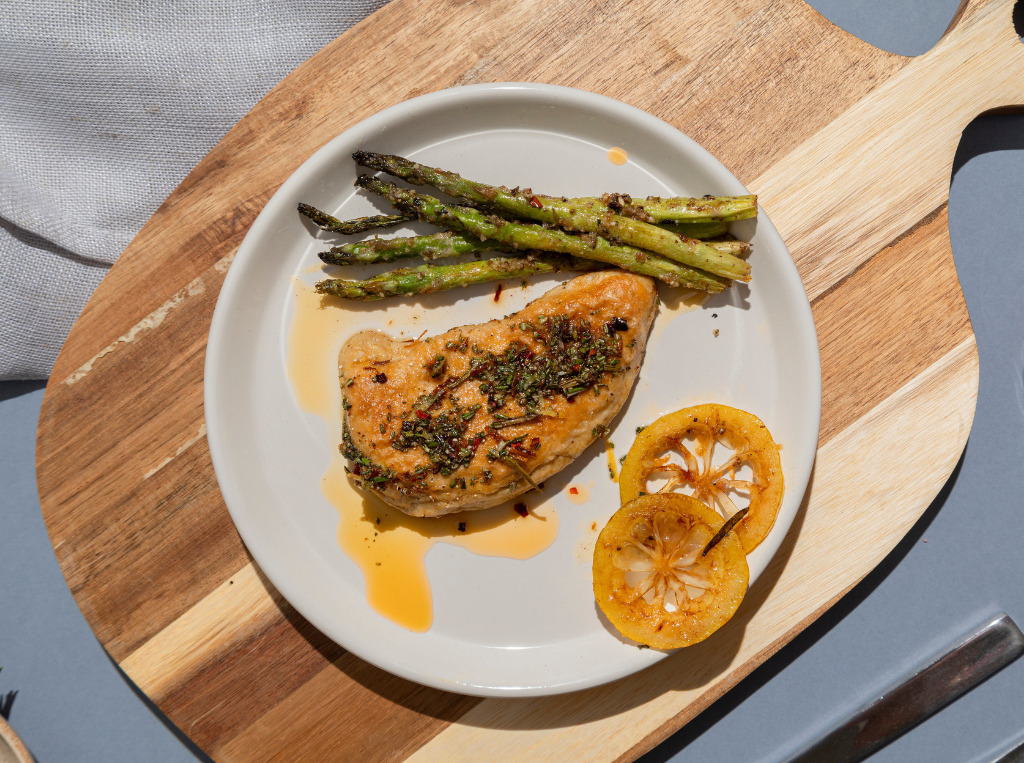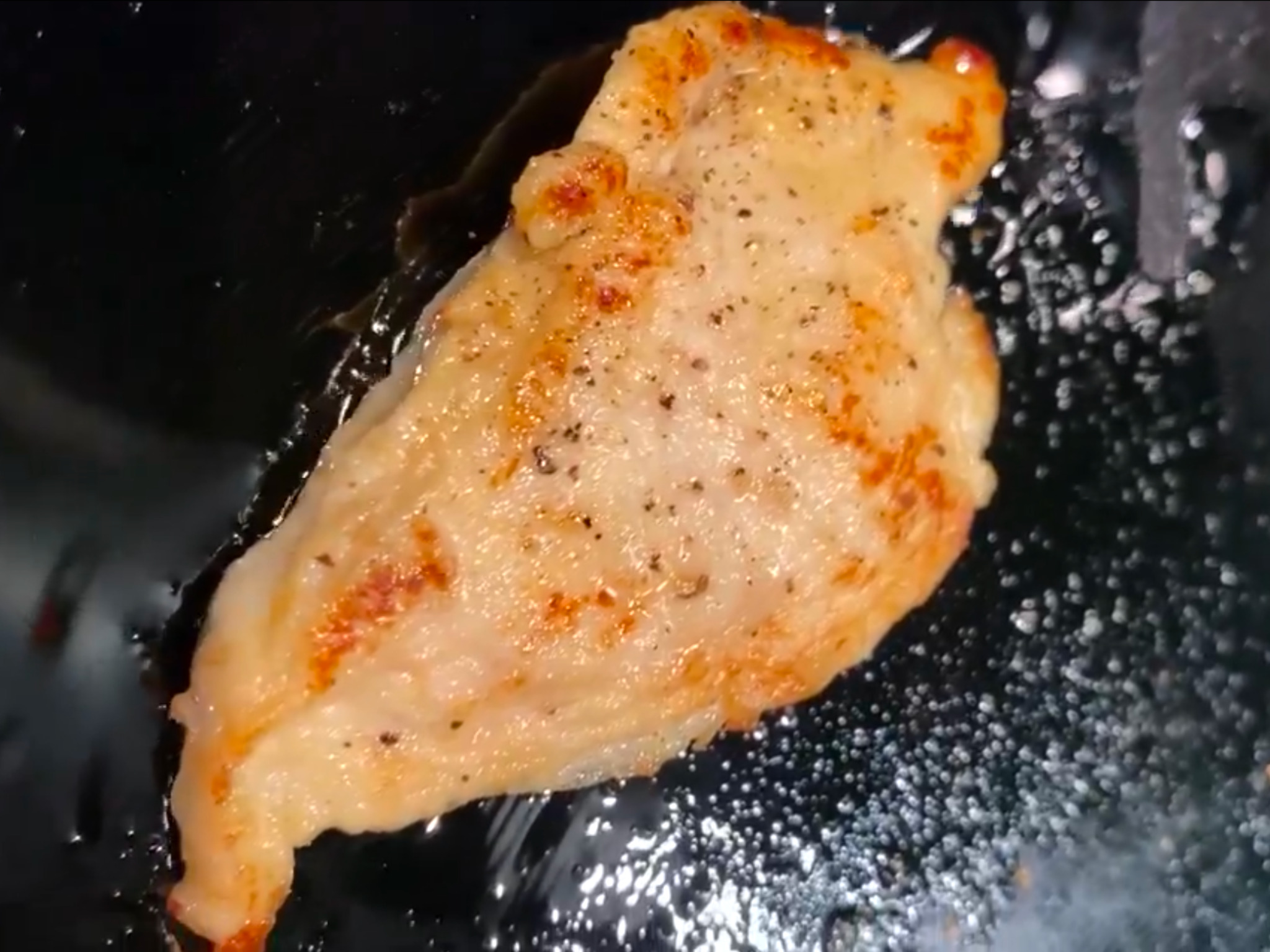Tempeh Reinvented: Better Nature Makes Whole-Cut Chicken From Upcycled Soybean Mycelium & Pulp
2 Mins Read
British tempeh brand Better Nature is working on a new whole-cut vegan chicken ingredient made from tempeh mycelium and okara, the pulp left over from soy milk production. Speaking to Green Queen, the company spills the beans on the upcycled ingredient, its R&D and launch plans.
There’s a café chain in Indonesia called Titik Temu (“meeting point”). Each spot is beautifully designed and popular with expats, thanks to its speciality coffee and a menu of locally inspired classics. During my time in Bali, I passed by and was instantly drawn towards the eatery, and ended up visiting it a couple of times.
On my second visit, I tried a black pepper chicken dish, substituting the poultry for tempeh. But when I tasted it, I was apprehensive. This was chicken, not tempeh: it was fibrous, without the customary crunch of the whole soybeans, and tasted an awful lot like chicken. When I asked the staff, they assured me it was the latter, requesting me to break down a piece and proving that it was, indeed, a black pepper tempeh dish.
It blew my mind – Indonesia had already proven to me that tempeh can (unlike in many places in the west) be splendid. But I’d never had tempeh with this texture or flavour, and it opened my eyes to the potential versatility of this protein powerhouse.
So naturally, when Christopher Kong – one of the co-founders of London-based tempeh startup Better Nature – teased an ultra-realistic vegan chicken breast on his social media, I was curious and excited.
The company has gone from strength to strength this year, raising £3M in Series A financing, launching a £1M crowdfunding round, becoming B Corp certified, securing listings in Tesco and Lidl, and entering the German market. Now, its R&D has led to a product blending traditional plant protein with a whole-cut meat analogue – while Singapore’s Good Health Farm makes a beef mince from tempeh, nobody has introduced a tempeh-derived whole cut before.
A tempeh makeover
Kong described the prototype as Tempeh 2.0, boasting an amino acid profile that’s similar to beef. Speaking to Green Queen, Better Nature co-founder and CTO Driando Ahnan-Winarno goes so far as calling it “the future of plant-based food”, an all-natural and nutritious (both key consumer concerns in the UK) protein ingredient.
So how is it made? You know the white part between the soybeans in tempeh? That’s mycelium. Better Nature grows this mycelium in a “nutritious broth” containing okara, the pulp left over from soy milk production. This is fermented using natural tempeh cultures from Indonesia, then drained and dried.
Ahnan-Winarno explains that there are multiple mycelium strains part of the “tempeh fermentation family”, including Rhizopus, Mucor and Neurospora. While he can’t yet disclose what the company is using, since the prototype is still in the development phase, he does confirm it’s a GRAS (generally recognised as safe) food component, which Kong said has been in use for decades – eschewing the need for any regulatory filings.

“The manufacturing process is also remarkably robust,” explained Kong. “Tempeh has been around for hundreds of years, so we’re not reinventing the wheel. We’re just giving it a serious makeover.”
Ahnan-Winarno noted that the development of the new product was possible thanks to a £350,000 grant it received from government-backed fund Innovate UK, and in partnership with microalgae R&D startup Neoalgae, nanotech expert Nucaps (both Spanish) and Estonian biotech solutions startup TFTAK.
Elevating tempeh’s appeal amidst a rise in whole-cut plant-based meat
A recent 7,500-person survey by the EU’s Smart Protein project revealed that 50% of Europeans don’t know what tempeh is. This is in stark contrast to its traditional soy counterpart, tofu, which 90% of people in the region recognise. Moreover, only 16% consume tempeh once a week.
Tempeh hasn’t yet hit the European protein mainstream the way tofu or plant-based meats have. But while the category is still niche, Kong said earlier this year that growing awareness means “it’s a matter of one year before tempeh becomes mainstream”.
This is part of the reason why Better Nature is working on this new tempeh product. “We want to widen the appeal of tempeh by creating 100% natural, nutritious, tempeh-based versions of category-leading formats like meat alt sausages, fillets, and nuggets, which we cannot currently do in a way that replicates meat with our regular tempeh,” Ahnan-Winarno tells me.

Whole cuts have been described as the ‘holy grail’ of plant-based meat, and the upcycled tempeh mycelium chicken can be seasoned, sizzled and served just like its conventional counterpart. Unlike traditional tempeh, there aren’t any whole soybeans in this product – it’s just mycelium grown in the okara broth. “Compared to regular tempeh, it has more bite, is chewier, and more fibrous,” the CTO explains. “I personally like it in the form of nuggets because its bouncy and fibrous texture is great combined with the nuggets’ crust.”
Plus, its nutritional credentials are potentially even greater than tempeh. Better Nature’s tempeh, for example, has 19g of protein and 6.6g of fibre per 100g. The Tempeh 2.0, meanwhile, can contain 50g of protein and 10.3g of fibre per 100g of dry weight – though “these numbers will change since we are still optimising the production process”. (A conventional chicken breast, meanwhile, consists of 31g of protein per 100g, and no fibre.)
Better Nature hopes to host public samplings of its tempeh mycelium chicken as soon as the development process is complete, but because it needs to go from pilot production to mass manufacturing, the earliest it can be launched is at the end of 2025.

Whole cuts have been gaining ground in the plant-based meat scene of late. Catalan brand Libre Foods will soon be launching the EU’s first whole-cut mycelium chicken breast, France’s Umiami added $34.7M to its Series A round to scale up its vegan chicken, and Singapore-based TiNDLE Foods debuted its TrueCut chicken at a trade event in Chicago.
In terms of seafood, Revo Foods launched Europe’s first 3D-printed meat with its salmon fillet, Escencia Foods unveiled its whole-cut mycelium whitefish at the Anuga food fair, and three Canadian companies have collaborated to create a salmon analogue. Israel’s Chunk Foods, meanwhile, has made its way onto fast-food chains and steakhouses with its whole-cut beef – a meat that’s the focus of several other startups too.




